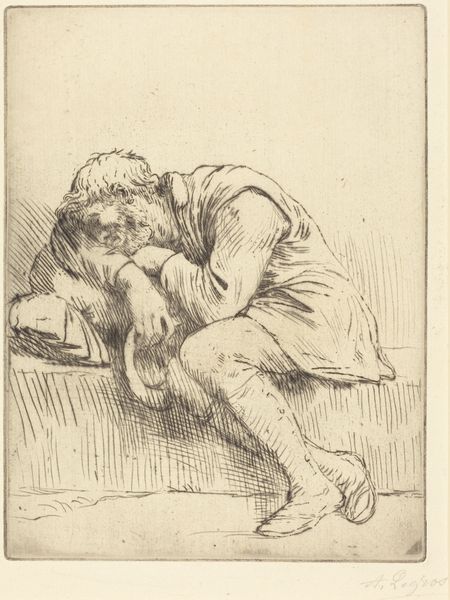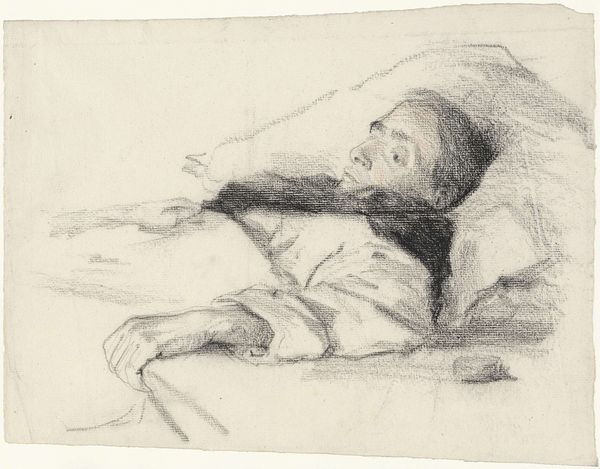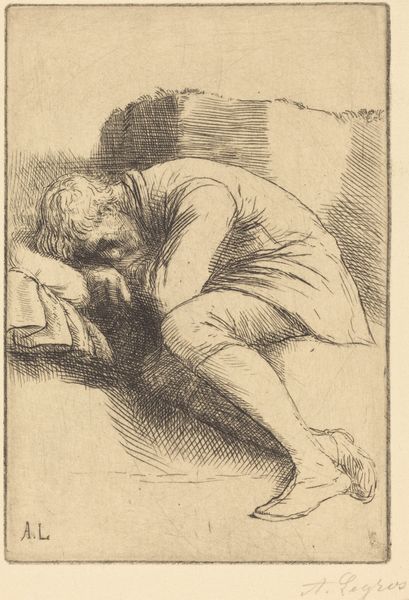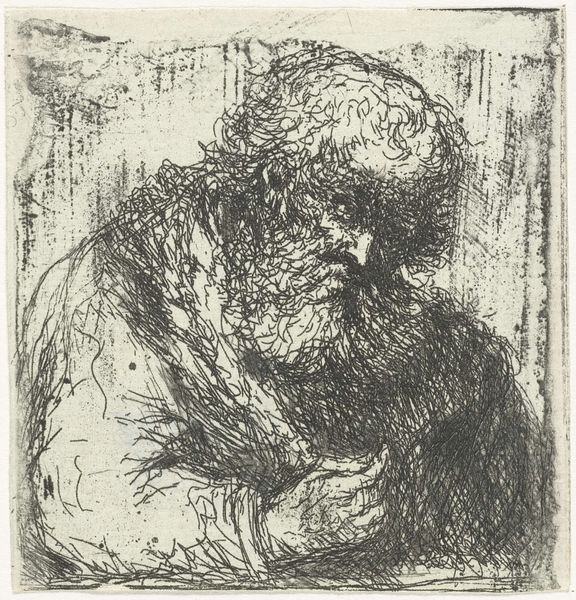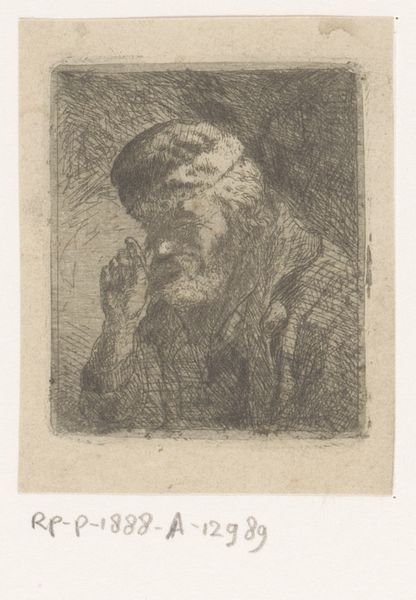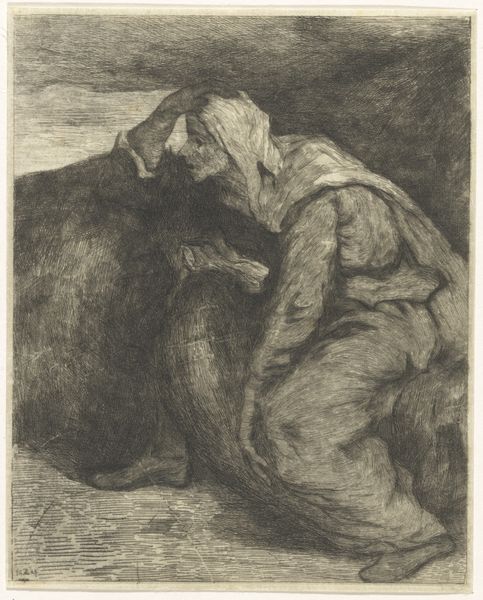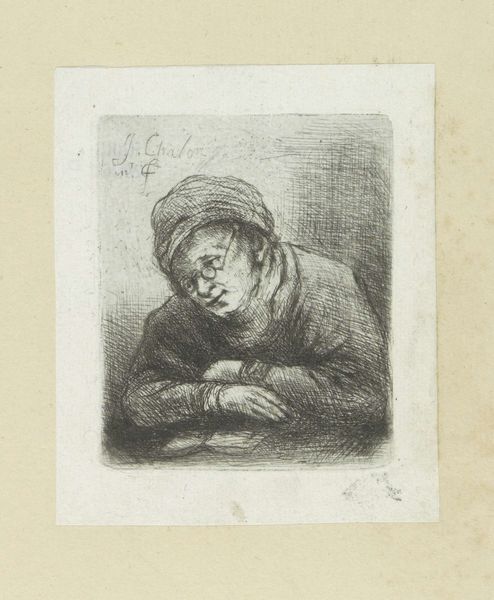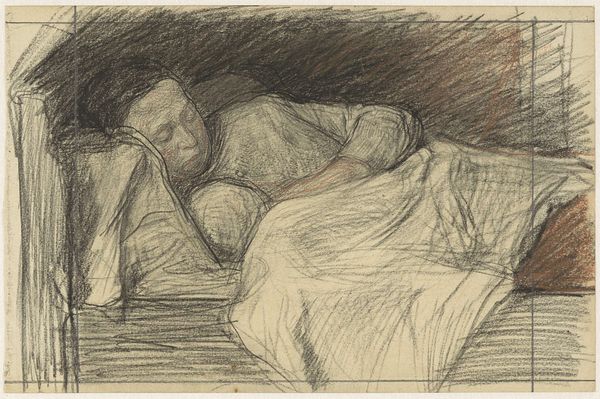
print, intaglio
#
portrait
#
dutch-golden-age
# print
#
intaglio
#
genre-painting
#
realism
Dimensions: height 103 mm, width 127 mm
Copyright: Rijks Museum: Open Domain
Curator: This intaglio print, "Head of an Old Man Lying in Bed," believed to have been created sometime between 1630 and 1700 by an anonymous artist, offers a surprisingly intimate glimpse into a very private moment. It resides here at the Rijksmuseum. Editor: My first thought is how vulnerable it feels. There's such an inescapable intimacy in the way the subject is presented. It's a portrait of complete repose, bordering on melancholy, wouldn’t you agree? Curator: Yes, the mood is very heavy. The deep lines etched into the plate contribute to the emotional gravity of the scene. Notice the turban; a typical subject in genre paintings that alludes to the wisdom and contemplation often associated with old age, a kind of universal representation. Editor: Absolutely, the head covering does add to that sense of venerable age, of course. But, in its plainness, does it signal a connection with images of common, even impoverished people that were popular during the Dutch Golden Age? There is something undeniably egalitarian about the subject matter; a leveling in this rendering of slumber. Curator: That’s a fascinating point. There's also the symbolism inherent in depicting sleep itself. Sleep is frequently equated with death or, at the very least, a surrender to forces beyond our control, an entrusting oneself to nature’s cyclical rhythms. This links to ideas of acceptance and natural processes. Editor: Precisely! The image becomes then, not just a study of a man, but of the universal experience of aging and mortality. That stark realism underscores how democratic death, or sleep as its mirror, really is. Curator: I am very taken with that; thank you for guiding me toward that angle. Editor: A fruitful insight, and that's why it remains, and matters so profoundly even now.
Comments
No comments
Be the first to comment and join the conversation on the ultimate creative platform.



